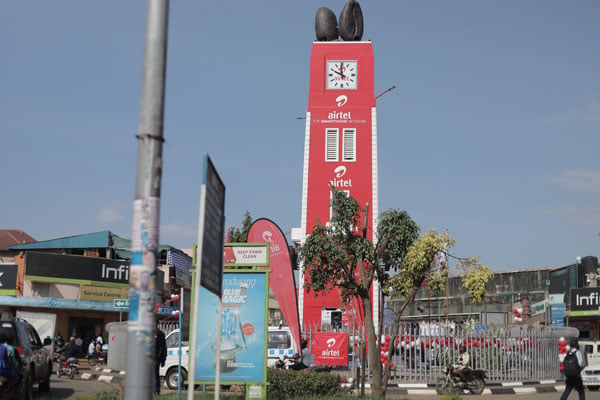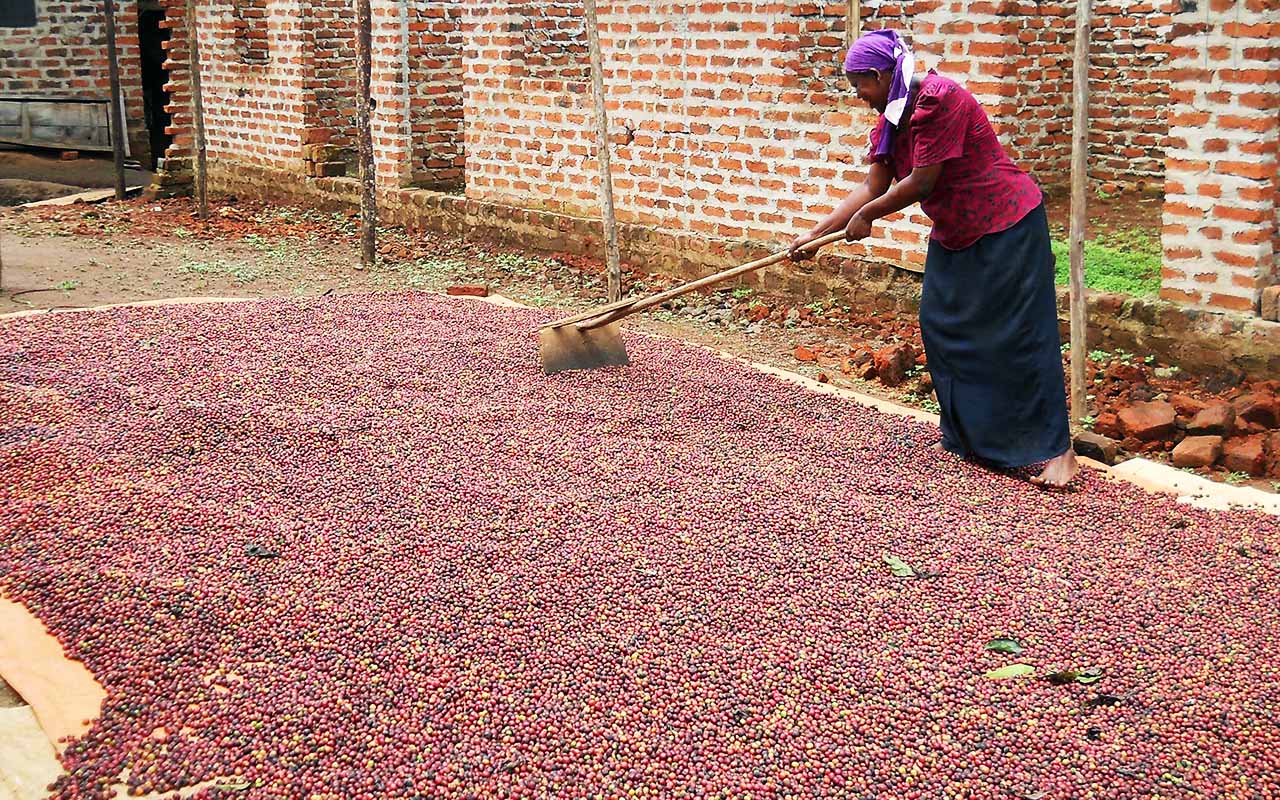
A woman records a video using a smart phone at an event in Kampala. The growing popularity of smartphones, video consumption, and other multimedia services will continue to drive demand for data services. PHOTO/EDGAR R. BATTE
|Prosper
Prime
Telecoms bank on data as top revenue driver
What you need to know:
While there is concern among telecommunications companies about a global decline in revenue from voice services for fixed and mobile phones, there is a parallel rise in revenue from data and digital services.
The pressure on the telecommunications companies (telcos) to change their business models and customer base is growing.
The growth of the telecom sector will be dependent on the creation of new revenue streams because of Uganda’s slow annual growth rate of only 5.7 percent.
Currently, telcos have a variety of revenue sources, including voice, data, roaming, hardware sales, fintech, and value-added services. But voice services – their traditional source of revenue is sadly dwindling.
These revenues from phone calls, text messages, and voicemail services, which now account for more than 50 percent of telcos’ revenues, have been leveraged for decades.
However, the emergence of over-the-top applications like WhatsApp, Telegram, Skype, and Facebook, have cracked this precious pot.
Without even having physical infrastructure in the country, the aforementioned companies are reaping the benefits that traditional telecoms are ideally meant to leverage on.
Additionally, they employ the most recent technological developments that local telecoms are reluctant to adopt because of their high capital requirements.
However, since their traditional revenue streams are quickly becoming uncertain, telecom companies must look for new, sustainable sources of income.
In fact, this is something that investors in technology are aware of.
The Uganda Communications Commission (UCC) reports that in 2022, local startups in the Information and Technology (ICT) industry raised over $70 million in seed capital, an increase of 964.3 percent from the $6.5 million raised in 2021.
However, none of them had any plans to capitalise in communications or provide Internet services.
Demand for digital
The tech-savvy population’s rising demand for digital solutions is a major factor in the success of Ugandan startups.
The country’s thriving young population has driven the demand for tech-driven goods and services, creating a favourable environment for startups to flourish.
According to the UCC, more than 30 telecom companies operate in Uganda, including Airtel Uganda, MTN Uganda, Lycamobile Uganda, Roke Telkom Uganda, and Liquid Telecom, all attempting to profit from the over 35 million Ugandans who own mobile phones.

The emergence of over-the-top applications like WhatsApp, Telegram, Skype, and Facebook have disrupted revenue streams for telecoms. PHOTO/MICHAEL KAKUMIRIZI
Prior to its October 2023 listing on the Uganda Securities Exchange, Airtel Uganda, stated in its prospectus that revenue from voice services made up roughly 58 percent of its revenues.
The fall of voice
As mobile voice penetration rises in Uganda’s youth, semi-urban, and rural markets, the telco predicted that this revenue would continue to account for a majority of its overall revenue over the medium term.
However, demand for traditional voice services is in decline across the global telecommunications industry.
The sector regulator, UCC, made note of this in its 2022 quarter one sector performance report, noting that the slowing growth in domestic talk time from 17.1 billion minutes in the previous quarter to 16.4 billion minutes may be indicative of behavioural or consumption changes as consumers gradually switch from traditional voice to app-based messaging solutions.”
Nevertheless, domestic talk then decreased slightly to 16.4 billion minutes in the second quarter of 2022.
Voice services in Uganda are still anticipated to grow due to increased penetration, but in the long run, they will decline.
“The revenue that the Company could generate from interconnect and roaming services may also decrease if there is a decline in demand for voice services across the industry,” Airtel Uganda retaliated.
While there is concern among telecommunications companies about a global decline in revenue from voice services for fixed and mobile phones, there is a parallel rise in revenue from data and digital services.
According to assurances given to investors by Airtel Uganda and MTN Uganda, the growing popularity of smartphones, video consumption, and other multimedia services will continue to drive demand for data services and counteract any decline in voice service revenue.
The government-owned telco, UTel, formerly known as Uganda Telecommunications Corporation Limited (UTCL), is also pleading for a portion of the customers shared by Airtel and MTN to leverage on for a wide customer base.
The telco had failed to break even after receiving investors from the Libyan government, which waged a bloody war in 2011. The government has so far planned to spend more than Sh300 billion to revamp the business.
UTel intends to increase its infrastructure spending to concentrate on enhancing voice and data connectivity. This is because the company is still using a 3G mobile network and has lagged behind its competitors, MTN Uganda and Airtel Uganda, who have recently launched 5G.
Mr Shaban Sserunkuma, a technology analyst, says UTeL needs at least a solid customer base from which it can grow from.
“The population can access all telecom services, from voice to data to fintechs. UTel needs to improve what’s already on the market. Otherwise, it will just fall out and sink into losses. Now that it’s owned by the government, it can call on government employees and institutions to use it and build on that,” Mr Sserunkuma said.
Following a survey in December 2022, UCC has already identified UTel as one of the companies that offer inadequate or nonexistent communication coverage in some areas, referred to as “blackspots.”
Data and fintechs
The demand for telcos’ data and financial technology segments has recently increased. As a result, in 2022, MTN Uganda’s revenue increased by 11.1 percent to Shs2.27 trillion.
Spectrum is the variety of radio frequencies that are used to transmit different types of signals, such as those for mobile phones, television broadcasts, Wi-Fi networks, and more.

The demand for telcos’ data and financial technology segments has recently increased. PHOTO/ MICHAEL KAKUMIRIZI
In contrast to voice revenues, which are anticipated to grow by 7 percent and are capitalised on the company’s 17.1 percent customer base growth, Airtel Uganda projects data revenues to grow by 33.6 percent year over year in 2023, with their contribution to overall revenue increasing to 39 percent.
MTN Uganda’s chief financial officer and executive director, Mr Andrew Bugembe, says if a telecom company has good spectrum, it invests less in its operations, thus boosting their internet speed.
Telcos have recognised this and have requested additional spectrum from the UCC to accelerate service delivery as new technological advancements in internet speed emerged.
However, only Airtel Uganda and MTN Uganda were successful in their requests for 5G spectrum from the UCC in July 2023.
The 700 MHZ, 2.3 GHZ, 2.6 GHZ, and E-Band frequency ranges were all heavily won by MTN.
Contrarily, Airtel Uganda was given access to spectrum in the 800 MHz, 3.5 GHz, and E-band bands. This means MTN Uganda’s spectrum allows it to cover long distances and penetrate obstacles, allowing it to provide wide-area coverage in both urban and rural areas, whereas Airtel Uganda’s higher-frequency bands have higher data-carrying capacity but shorter coverage ranges and are frequently used to deliver high-speed data services in urban areas.
This explains why approaches taken by both companies in their internet rollout across the country using the available infrastructure. The distribution of spectrum was determined by the five-year investment plans of the operators.
ICT industry experts are optimistic that a telecom which will have more spectrum than their peers, will have less expenses in the future when demand for data surges.




